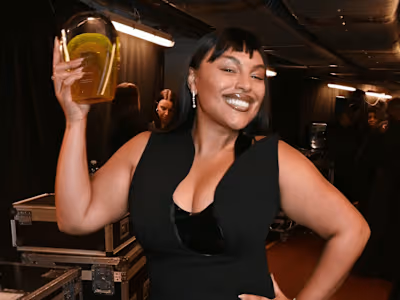From Paddock to Paris: Is Formula 1 the New Catwalk?
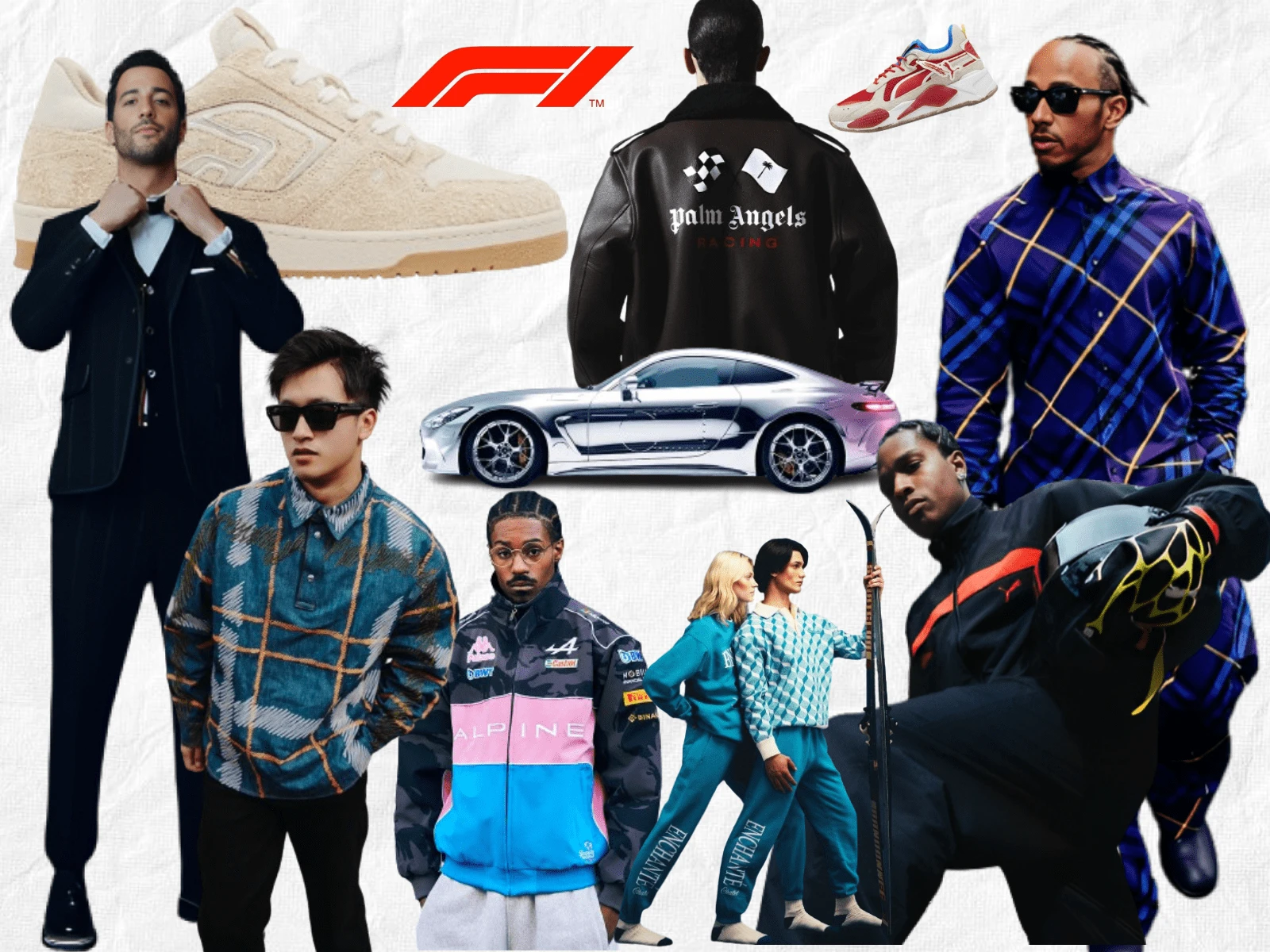
In the late 1960s, Sir Jackie Stewart and John Surtees played pivotal roles in elevating racers to celebrity status as Formula 1 gained international traction. However, it was Benetton, recognized for its bold colors, that set the stage for a lasting connection between fashion and F1 by sponsoring Tyrell and Toleman throughout the 1980s. The prohibition of tobacco sponsorships in the 2000s marked a turning point, ending the dominance that tobacco companies had in F1 sponsorships, allowing various companies to enter the scene. Fast forward to the present, and top brands like Tommy Hilfiger, Hugo Boss, and Puma are now synonymous with F1 fashion.
Within the Formula 1 realm, fashion brands encountered a formidable obstacle to entry, given the conventional sight of drivers clad primarily in their team kits around the track—official team merchandise dominating the scene. However, transcending the sport itself, Lewis Hamilton, a name arguably more ubiquitous than Formula 1, emerged as the trailblazer and progenitor of what is now termed "paddock fashion." The paddock, situated behind the pit lanes and team garages, serves as the backdrop where F1 drivers make their entrance onto the circuit. Hamilton's distinctive style, coupled with his rebellious stance towards attire, regardless of pervasive critique, propelled him into the echelons of a fashion icon. Beyond his paddock ensembles, Hamilton has forged collaborations with notable brands such as Tommy Hilfiger and Takashi Murakami, unveiling captivating capsule collections and featuring prominently in Valentino's campaign alongside Zendaya. In a contemporary shift, Alfa Romeo's Zhou Gaunyu, the first Chinese F1 driver, now shares the coveted title of 'fashion icon' with Hamilton. With a maternal link to the fashion domain, owing to his mother's design background, Zhou has consistently showcased resplendent looks in partnership with Prada and Rick Owens since his debut, marking a distinctive intersection of Formula 1 and high fashion.
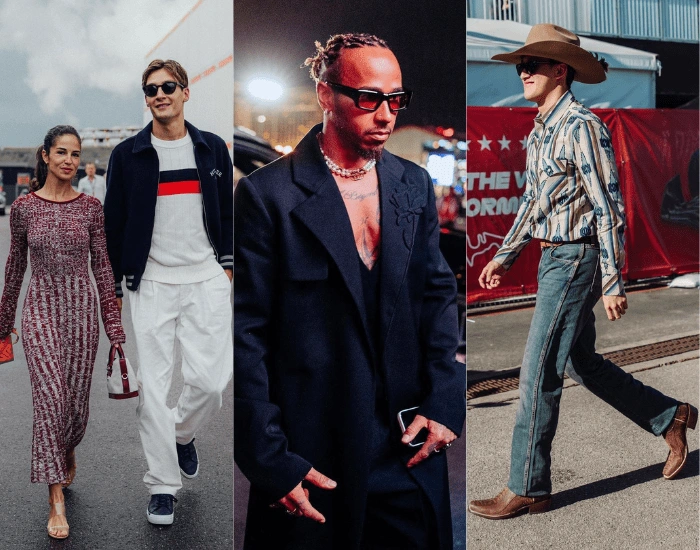
(L to R) George Russell with his girlfriend, Carmen Mundt, Lewis Hamilton, and Zhou Guanyu
In the wake of the Netflix docuseries 'Drive to Survive,' Formula 1 has garnered significant attention in the United States, unraveling the intense drama inherent in the exclusive and high-pressure world of F1. The documentary's resounding success is evidenced by a remarkable 28% surge in American viewership on ESPN in 2022 compared to 2021. 'Drive to Survive' offered a nuanced portrayal of F1 drivers, delving into their personalities, interpersonal dynamics with fellow drivers and team members, and their daily lives. This unique insight has enabled drivers, irrespective of their initial popularity, to meticulously shape their personal brands. Leveraging social media platforms and sophisticated PR strategies, each driver has ascended to unprecedented levels of fame, attracting an array of sponsorships, notably from prestigious luxury fashion and lifestyle brands. The surge in American interest, as reflected in these statistics, positions the Las Vegas Grand Prix as a contender to rival the historic stature of the Monaco Grand Prix — an intersection of speed, opulence, and fashion.
Leveraging social media platforms and sophisticated PR strategies, each driver has ascended to unprecedented levels of fame, attracting an array of sponsorships, notably from prestigious luxury fashion and lifestyle brands.
Formula 1's motorcore aesthetic is a stylistic bequest to the fashion realm. Embracing leather jackets, logo-laden varsity jackets, and even miniskirts (a daring choice no racer would contemplate on the track), motorcore transcends conventional athleisure and streetwear. Beyond its influence on casual fashion enthusiasts, this trend has garnered newfound popularity, propelled by the widespread acclaim of "Drive to Survive." Motorcore, stemming from the four-wheeled domain, and its counterpart, bikercore, rooted in two-wheelers, have a shared motorsport origin yet boast distinct and devoted fanbases. These aesthetics not only redefine fashion but also serve as wellsprings of inspiration for luxury designers.
Dior ingeniously adopts the motorcore aesthetic, infusing it with opulence in the realms of luxury fashion. Maria Grazia Chiuri, the women's designer, and Kim Jones, the men's designer, both embrace racing themes in their creations. Chiuri's FW22 collection showcased exquisite jackets and gloves, while Jones collaborated with Gran Turismo 7 developers to craft a digital racing ensemble — complete with a suit, helmet, gloves, and boots — subsequently brought to life by the skilled artisans at Dior's ateliers.
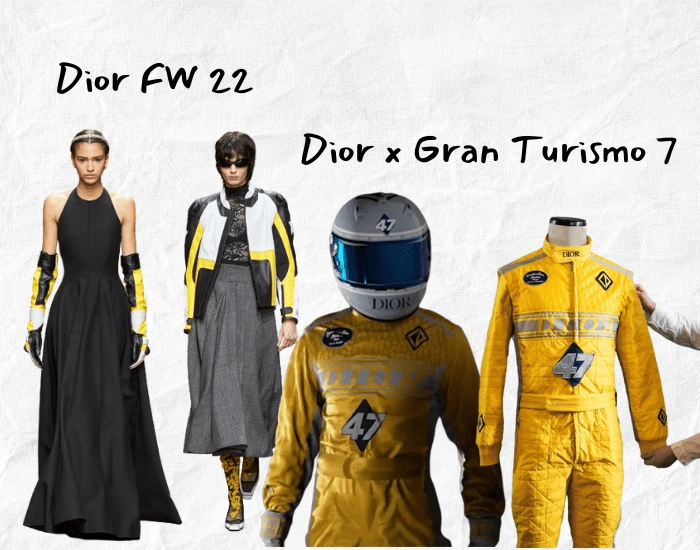
(L) Designs from Dior FW 2022 Collection and (R) Dior's collaboration with Gran Turismo 7
Brands perennially seek to harness the unwavering loyalty of sports enthusiasts. Athletes, evolving into a distinct brand of celebrities, transcend their sport, reshaping the landscape of streetwear. Infused with the ethos of discipline and diligence, they embody an aspirational lifestyle that transcends sporting boundaries, resonating with a broader audience. The desire for a tangible connection with these athletes propels fans and casual admirers alike to covet a piece of their narrative. In this era, brands find themselves compelled to craft nuanced sports marketing strategies, strategically positioning to assert dominance in a market increasingly defined by these influential athletic personas.
Nike and Adidas have positioned themselves as primary sponsors across a spectrum of sports, spanning football, cricket, and basketball. Formula 1, however, distinguishes itself amid this chaos due to its extravagant and exclusive nature, boasting a high barrier to entry. As F1 drivers increasingly capture the attention of the American audience, brands aspire to forge early connections with these rising stars, establishing a symbiotic association that remains synonymous. This strategic maneuver allows brands to assert dominance in F1 sponsorships from the inception of a driver's ascent, preempting mainstream success. The parallels between crafting haute couture and engineering Formula cars add a layer of sophistication to this convergence. Luxury brands aligning with F1 drivers transcend mere personal endorsements, extending their reach to the pinnacle of engineering prowess. If there exists a point where motorsport engineering seamlessly intersects with couture design, it unequivocally resides in the realm of Formula 1.
Formula 1, however, distinguishes itself amid the chaos due to its extravagant and exclusive nature, boasting a high barrier to entry.
The most noteworthy outcome of this fusion is the emergence of innovative products for consumers. Driver collaborations, F1-themed capsule collections, and subtly motorsport-inspired items are shaping a distinctive genre of clothing, providing fans with an expanded array of choices. The marriage of high-speed racing and high fashion is not only reshaping the F1 landscape but also revolutionizing the consumer experience.
In the global landscape of high fashion, Las Vegas may not typically be considered a premier destination. However, Formula 1 bestowed upon it a distinctive status during the race weekend, drawing individuals from across the globe who expressed themselves through a captivating fusion of streetwear and motorsport. Streetwear and athleisure brands seized this opportunity to redefine a unique genre that not only draws substantial inspiration from but also epitomizes the zenith of motorsports – Formula 1.
The Las Vegas Grand Prix orchestrated an unprecedented confluence of the fashion and Formula 1 realms. Teams, in a bid to herald their resurgence in Vegas, unveiled exclusive capsule collections, harking back to the vibrancy of the 80s. Sacai, making its foray into motorsports, collaborated with Mercedes AMG to unveil not only a capsule collection but also a customized wrap for the new Mercedes-AMG GT. Termed the "Las Vegas GP Exclusive Collection," Ferrari, in collaboration with Puma, introduced its inaugural capsule collection, masterfully crafted by Joshua Vides, encompassing racer gloves, racing suits, and everyday casual wear. Alpine's distinctive pink, blue, and black hues found expression in a collaborative capsule collection by Palace and Kappa, unveiled at the Las Vegas GP. Particularly stealing the limelight was a brown leather jacket with black fur detailing, a creation from the collaboration between Palm Angels and the home team, Haas, constituting their second capsule collection.
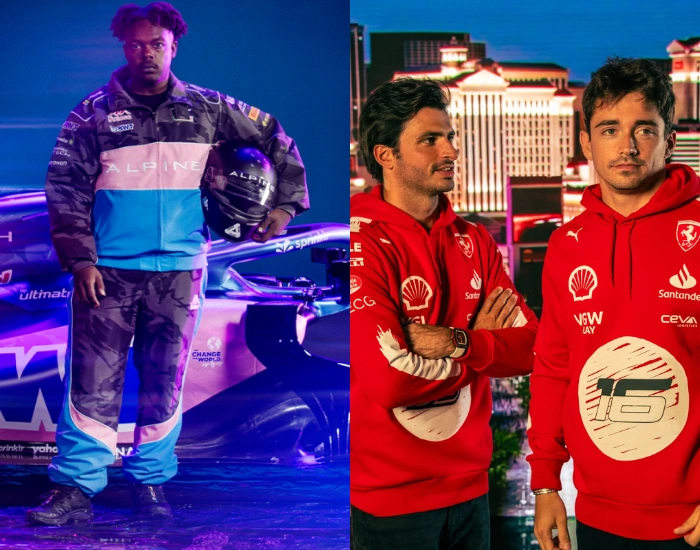
(L) Alpine x Palace x Kappa and (R) Ferrari x Puma starring Charles Leclerc and Carlos Sainz
The phrase 'Vegas Fashion' may not immediately conjure specific imagery, perhaps eliciting thoughts of outfits suited for parties, casinos, and bars. Despite the presence of luxury retailers in the Grand Canal Shoppes over the years, there has not been a distinct fashion aesthetic associated with Vegas. However, as motorsport brings its own unique style, the emergence of "motorcore" as an integral facet of Vegas's identity remains a plausible evolution. Leading this transformative narrative is A$AP Rocky, appointed as the creative director for the partnership between Puma and F1. Beginning his fashion odyssey at the Miami Grand Prix in 2024, A$AP Rocky is set to collaborate with teams, orchestrating curated activations at each race. With a vision that seamlessly blends racewear, streetwear, and fanwear, Puma and F1, under the stewardship of Rocky, are poised to dominate the fashion landscape.
While the enduring connection between high-end fashion and Formula 1 remains elusive for many fans, brands like Pacsun are bridging this gap by acknowledging the surging interest among the general public. Recognizing the demographic shift toward a younger audience with growing purchasing power, brands strategically tailor their marketing to offer accessible merchandise options for a sport traditionally associated with luxury. A case in point is Abercrombie and Fitch, which unveiled a McLaren capsule collection at the Silverstone Grand Prix, underscoring the expanding market for affordable F1-themed merchandise catering to a broader fan base.
In the evolving landscape of Formula 1, female racers still grapple with penetrating an industry that uniquely accommodates both genders at a competitive level. Across its 73-year history, only two female drivers have navigated F1. However, with emerging talents like Jamie Chadwick and Bianca Bustamante securing visibility, a fresh wave of brands is capitalizing on these opportunities. Notably, Anastasia Beverly Hills boldly adorns Bianca Bustamante's F4 debut car, designating the Filipina racer as the inaugural athlete ambassador for the cosmetics brand. This paradigm shift signals a welcoming embrace of female-centric brands into the F1 sponsorship sphere, not only expanding avenues for female drivers but reshaping the motorsport landscape into an inclusive domain for both drivers and enthusiasts.
Formula 1's influence extends beyond the motorsport aesthetic, permeating the realms of literature and pop culture. Lauren Asher's "Dirty Air" series, inspired by F1, has garnered popularity among Young Adult fiction and romance enthusiasts, transcending the traditional boundaries of the racing world. Moreover, ‘Dirty Air’ serves as a gateway for many young girls and women, fostering their entry into this dynamic domain. Leading this cultural shift is Daniel Ricciardo, a charismatic figure whose humor and enduring career make him the quintessential face of F1. Lewis Hamilton, an early trailblazer in intertwining racing and fashion, continues to redefine the pinnacle not only in motorsport but also in the fashion landscape. Additionally, Red Bull's Sergio Perez, affectionately known as "Checo," has endeared himself to the entire nation of Mexico, featuring prominently in music videos such as Bad Bunny's 'Monaco' and Carin Leon's 'Por La Familia.'
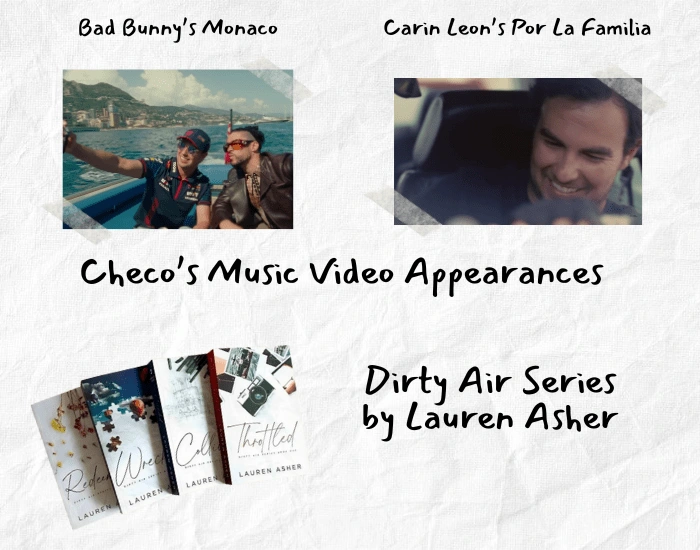
(Top) Sergio "Checo" Perez's Music Video Appearances in Bad Bunny's 'Monaco' and Carin Leon's 'Por La Familia' and (Bottom) Dirty Air novel series by Lauren Asher
In the fast-paced world of Formula 1, the marriage of speed and style has evolved into a captivating narrative that extends far beyond the racetrack. From the groundbreaking influence of racing legends to the disruptive force of contemporary figures like Lewis Hamilton, F1 has seamlessly integrated itself into the cultural tapestry of literature, pop culture, and high fashion. The Las Vegas Grand Prix, with its unique intersection of motorsport and streetwear, epitomizes this dynamic evolution, while the democratization of F1-themed merchandise and the inclusion of female-centric brands mark a shift towards greater accessibility and inclusivity. As Formula 1 continues to redefine the boundaries of sports and fashion, it underscores a timeless truth – the pursuit of speed, the allure of style, and the indomitable spirit of competition resonate universally, transcending mere sport to become a global cultural phenomenon.
Like this project
Posted Dec 6, 2023
This article explores the evolving fashion landscape influenced by Formula 1, providing a comprehensive understanding of its transformative impact in the USA.
Likes
0
Views
33






